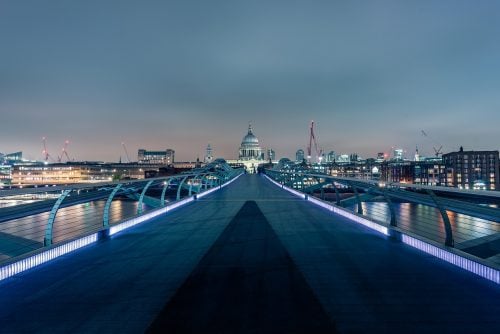The Mayor of London, Sadiq Khan, is inviting Londoners to give their ideas on how smart technology could improve their lives and help make the English capital the world’s top smart city.
Khan’s appeal to city dwellers, businesses, academics, public servants, and other stakeholders launches the Listening Exercise phase of the Smart London Plan.

The Mayor wants London to be the “global home of the data economy.” pixabay-1942868
The aim is to design technology around the needs of Londoners by ensuring “better digital collaboration across London’s boroughs and public services, better data-sharing, improved connectivity and digital skills.”
“We want London,” says Khan, “to be the global home of the data economy, to seize the benefits of new artificial intelligence, and inspire a new generation of inventors and developers to make our city even better.”
He especially wants to hear from “London’s thriving tech sector – already the envy of cities around the world” as their participation will really help to make the plan work.
He says that London’s public services is already at the forefront in terms of using new technology to improve people’s lives. He now wants to use the plan to push towards a “more inclusive London.”
What is a smart city?
The term “smart city” became mainstream around the turn of the century and there are probably as many definitions of the term as there are cities that have a smart city plan.
Initially, the term meant using information and communication technology (ICT) to serve the communities that live and work in cities. Later, with more use, the term broadened to encompass other domains.
In his recently published book “Understanding Smart Cities: A Tool for Smart Government or an Industrial Trick?”, Leonidas G. Anthopoulos of the Technological Educational Institute (TEI) in Larissa, Greece, suggests that “smart city” has become an umbrella term that covers the use of ICT and innovation to address six domains: “people, economy, governance, mobility, environment, and living.”
In addition, there is an emphasis on addressing the challenges posed by these domains in ways that are economically, socially, and environmentally sustainable.
For example, the city of Vienna in Austria, defines smart cities as “forward-looking, progressive, and resource-efficient,” while also providing a “high quality of life.”
Vienna’s definition spans technological and social innovation, promotes environmentally friendly energy and transport, and new approaches to governance and public participation.
Top smart city example rankings
While there is no single, widely-accepted definition or measure of a smart city, some are gaining wide recognition. In the following three, London has featured near, but not at, the top in the latest top smart city rankings.
– Ericsson Networked Society City Index, which measures “sustainable urban development and ICT maturity.” In 2016 and 2014, London came second to Stockholm.
– IESE Cities in Motion Index, which measures “governance, urban planning, public management, technology, environment, international impact, social cohesion, transportation, human capital, economy.” In 2017, London came second to New York.
-Juniper Research Worldwide Smart Cities, which measures “technology, transport, energy, open data, and economy.” In 2016, London came in third place after Singapore and Barcelona.
Although London may not yet have made it as the world’s top smart city, it is the best run, according to the World Economic Forum, who define “best run cities” as those that are “innovative, smart, and forward-looking,” and that “attract people, businesses, and investment.”
London’s working definition of a top smart city
To set the ball rolling with the public participation, the Smart London Board has put together their “working definition” of a world-leading smart city.
In a nutshell, they see that to become the world’s top smart city, London needs to harness the power of data to meet the pressures of a growing city in a collaborative way – by and for Londoners.
More specifically, they see a smarter London as a city that:
– uses the power of data to solve city problems in an open and inclusive way
– promotes opportunities to use smart technology and digital ways of working to manage the pressures of a growing city
– leads, rather than follows, the technology curve
– encourages its world-class scientific, creative, and tech communities to work closely with public institutions and utilities
What happens next
The collaboration will take the form of what the board call “five workstreams,” which will focus on: collaboration and innovation; city data; connectivity; digital skills; and openness and responsibility.
The board have also set out a list of questions, probing areas such as what experience do people have of developing services across sectors and what challenges they have encountered, and how might the tech and public sectors work together better.
The Smarter London Together page gives a complete list of questions and information on how to respond.
The updated plan will be released at London Tech Week in June.

